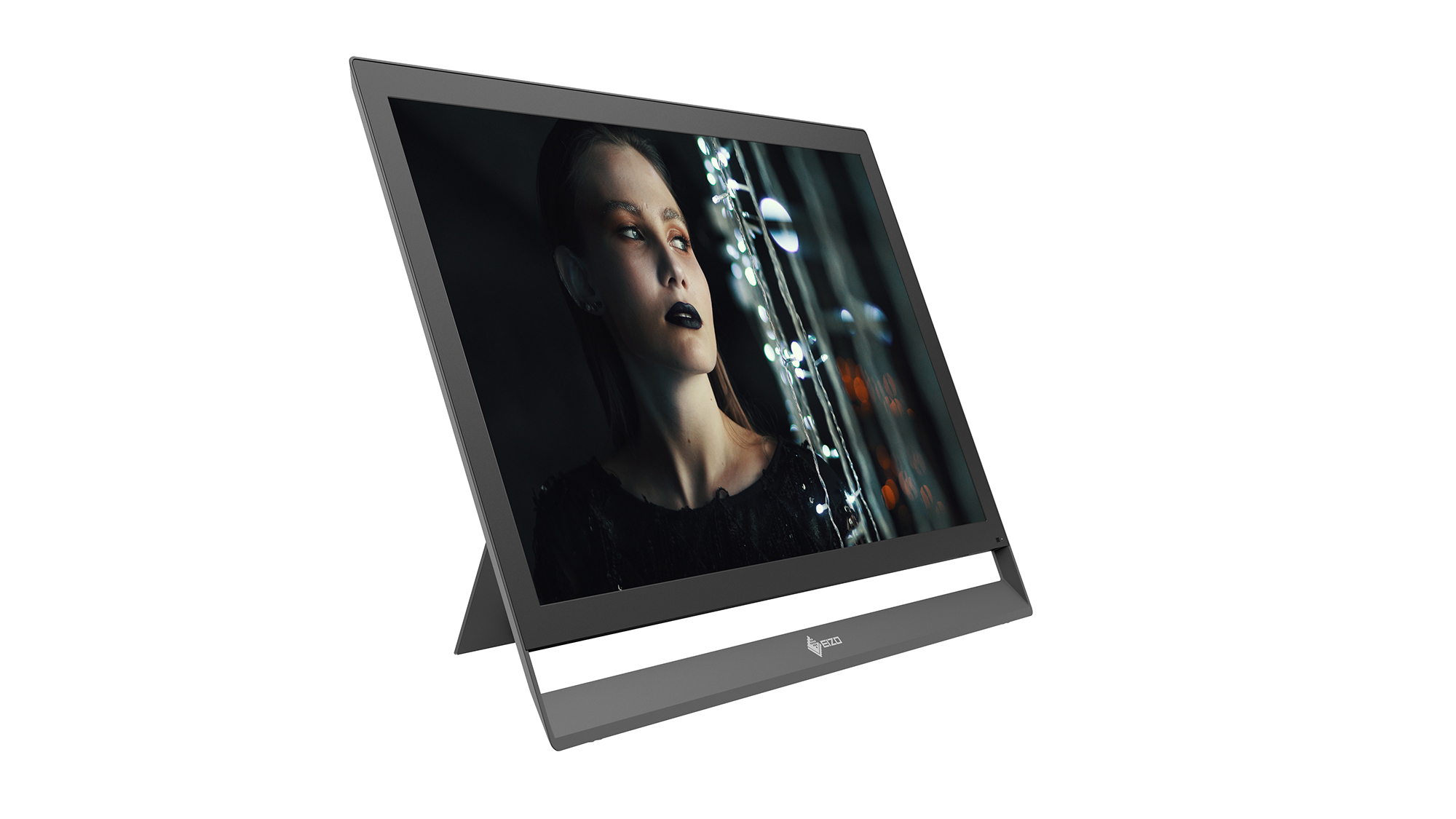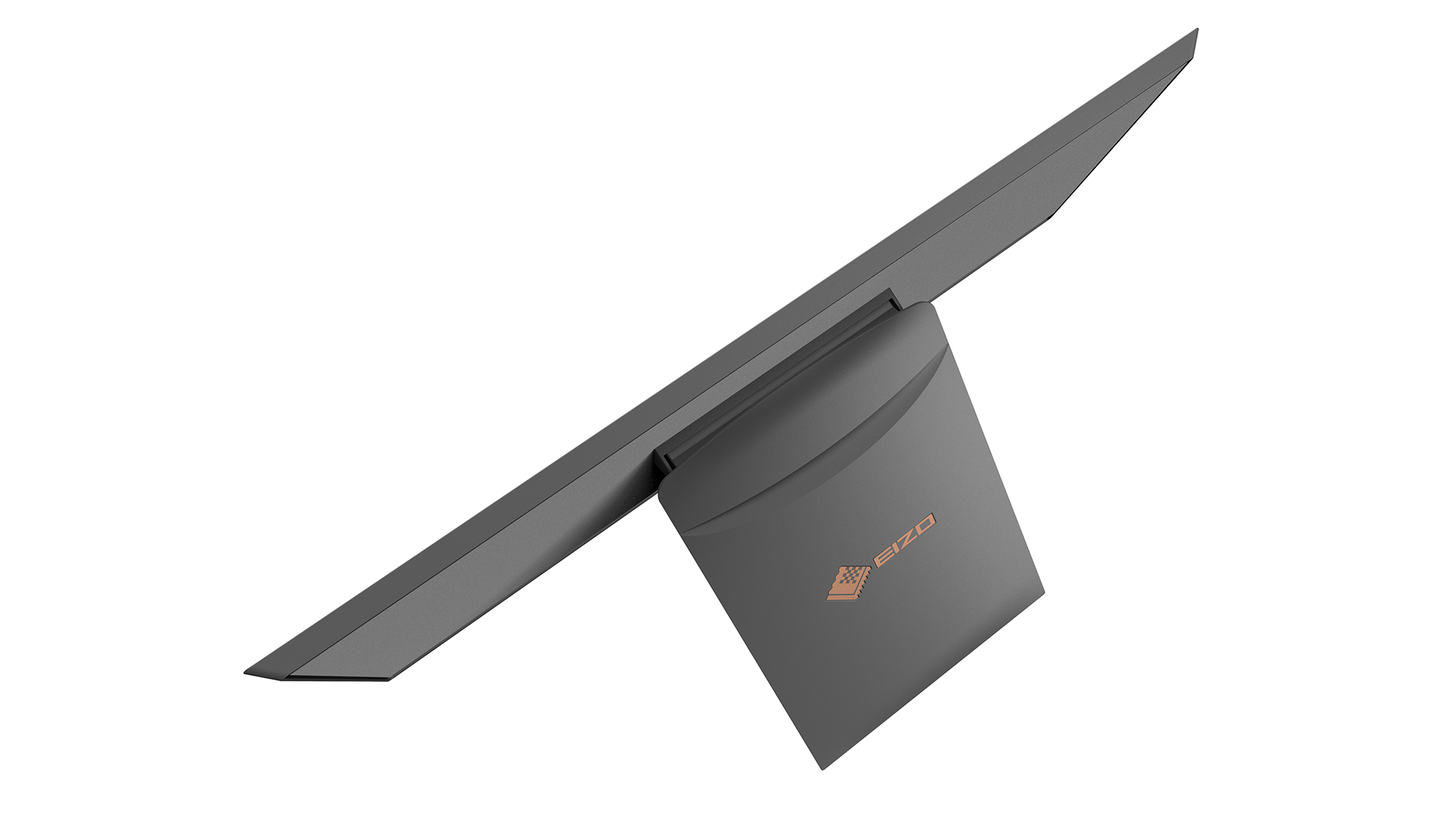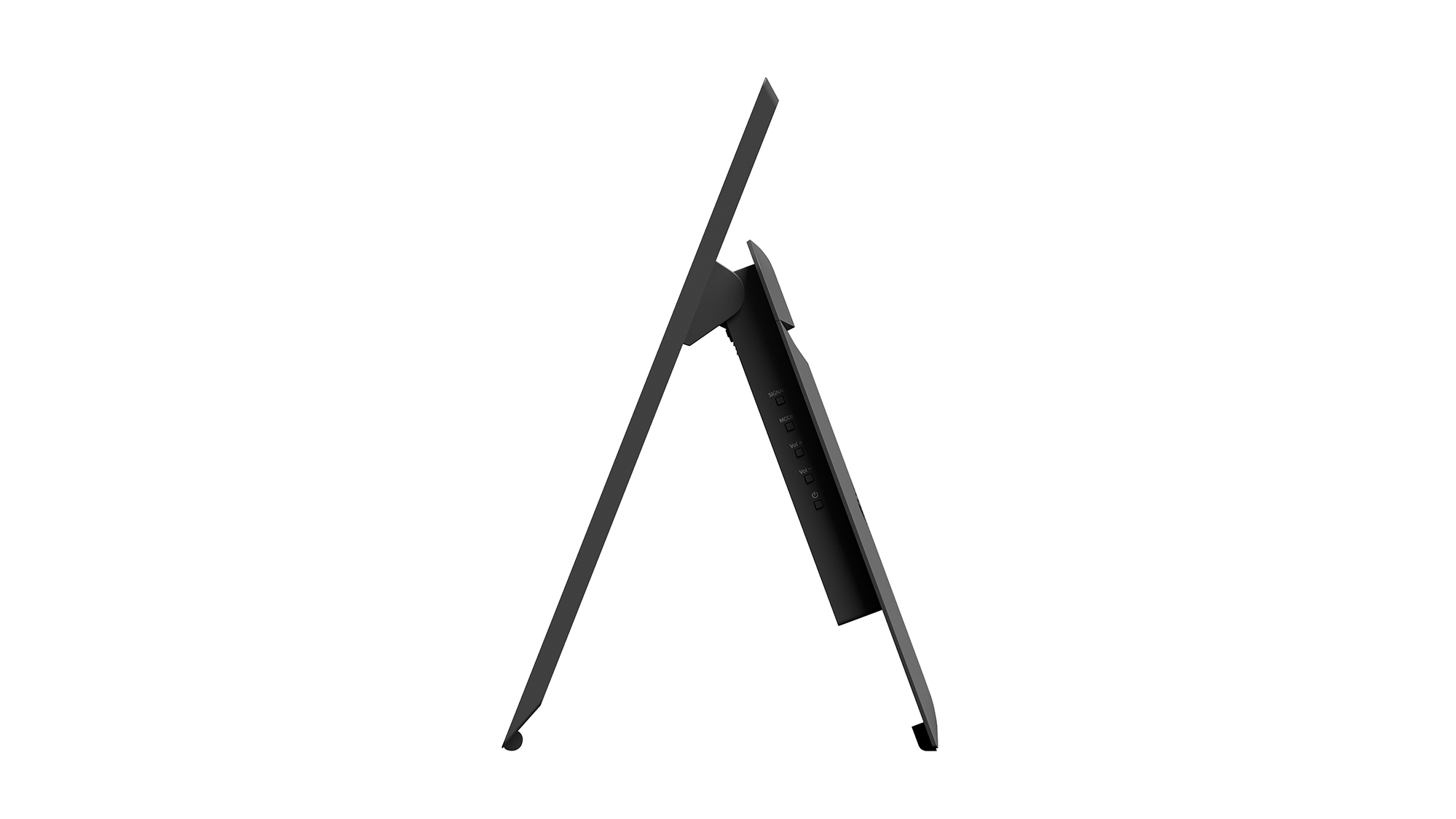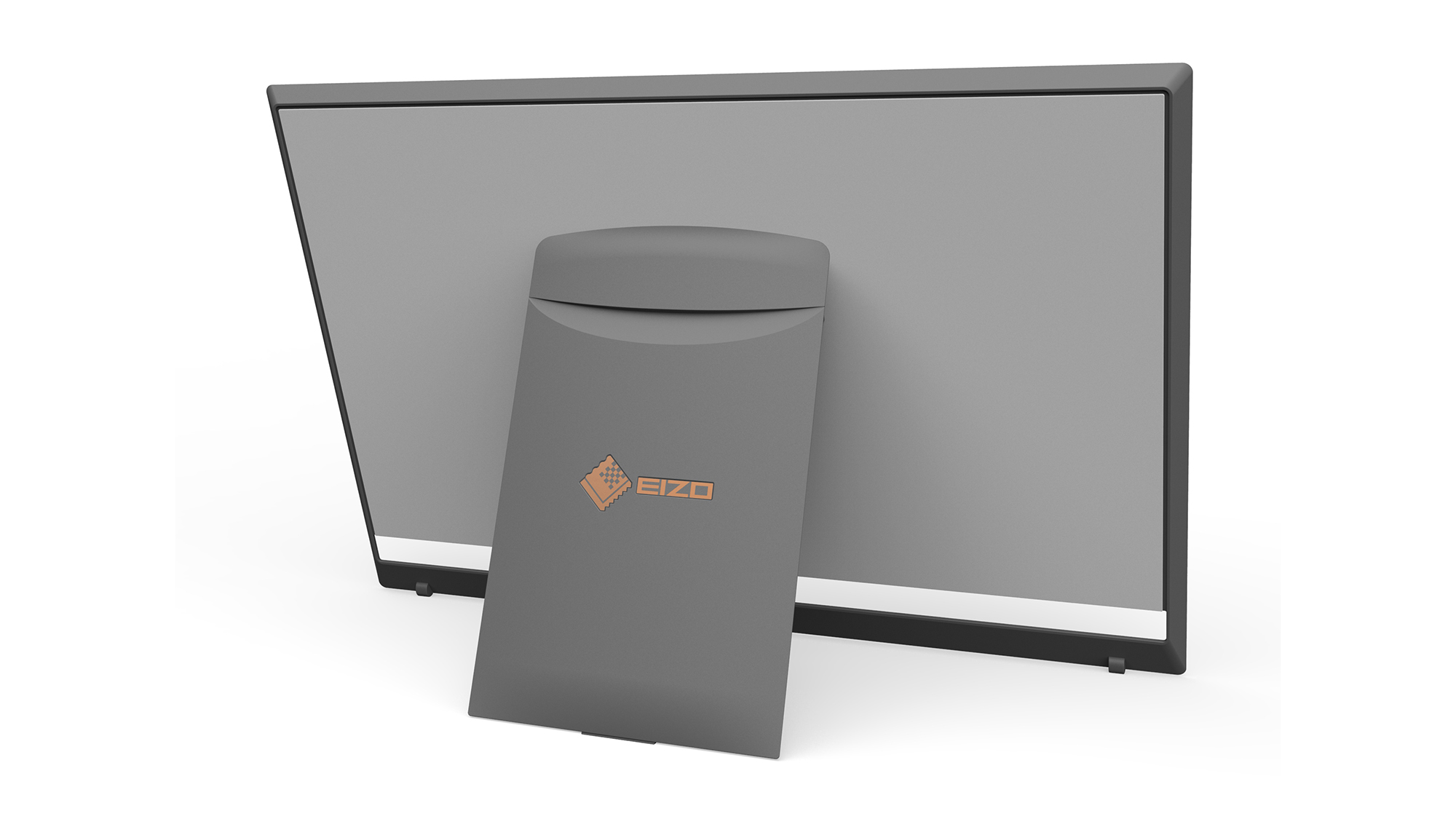Eizo Foris Nova review: The McLaren of monitors
Only for people with deep pockets, this is the first screen we’ve tested that makes a statement on a desk


-
+
Slim and light
-
+
Gorgeous design
-
+
Phenomenal screen quality
-
-
Limited availability

Cast aside any notions you have about what a monitor is; the Eizo Foris Nova defies them all. It certainly defies any idea of value for money, with a price that reaches for the sky and then keeps going. But then, if you buy the Foris Nova you’re also buying exclusivity: only 500 units of this monitor have been made worldwide and you’ll even receive a certificate of authenticity, along with your number, in the box.
Fortunately, exclusivity isn’t the only thing that makes it special. It also includes a stunning 4K OLED panel – and that has allowed Eizo to ignore the usual rules of monitor design to create something unique.
Eizo Foris Nova review: Design
The first thing that strikes you about the Nova is how thin and light it is. The casing measures 11.8mm from back to front, which is in stark contrast to the lumps of plastic, glass and metal that we usually call monitors. Rather than attach it to a typical desktop monitor stand, Eizo uses a kickstand similar to that found on the Surface Pro. It’s a design that makes a statement, one which is undoubtedly “I have money”.
That’s certainly one of the messages Eizo’s marketing pushes for the Foris Nova, with the screen located on an expensive and starkly empty desk. So empty, in fact, it doesn’t have wires, but we’re sorry to admit that the Nova isn’t so magical that it can do without these; in fact, you’ll need two. The first to connect the external power supply (which can at least hide under the desk), and the second for a video source.
There are two HDMI inputs built into the kickstand. These are placed on the underside of the housing you see to the left, meaning that you have to inelegantly hold the Nova upside down while you shove wires into its bottom. This task complete, you’ll want to spend the next few minutes tidying the cables to minimise the clutter. Because, alas, the cables do rather upset the Nova’s sleek lines.

Another aesthetic question mark hangs over the bezels, which at 22mm wide are much larger than we’re used to on a modern screen.
Eizo Foris Nova review: Image quality
You’ll soon forget about the bezels once you see this OLED panel in action, though. Having upgraded our Netflix account to the Ultra HD option,we fired up David Attenborough’s Our Planet to see what all the fuss was about. It looks simply spectacular: the ocean glimmers in a way that makes even the richest LCD screens look dull and, thanks to OLED’s effectively infinite contrast, the opening scenes – which show Earth from the moon’s surface – look phenomenal.
The difference is even clear when you’re watching more mainstream videos. For instance, in the absence of Wimbledon 2020, IBM and wimbledon.com partnered to digitally enhance archive footage that you can watch on demand. On the LCD panel of our test laptop, the courts looked pleasant enough, but switching to the Foris revealed them in their glorious, rich green.
This also indicates one possible professional reason to choose the Foris Nova. If you work in broadcasting and need an OLED display to check HDR output, this colour accurate display (which covers 80% of the BT.2020 colour space and supports the HDR10 protocol) might justify its price. It’s small enough to squeeze onto most desks next to a main screen, after all.
Before you think this the perfect screen for watching TV, we should point out that its built-in 1W speakers are distinctly weedy. If we were going to settle into a show, or play a game, we’d reach for a pair of headphones.

Eizo Foris Nova review: Ports and features
As with all Eizo screens, the onscreen display (OSD) is a joy to navigate, so if you want to jump between different colour profiles – and tweak them – then you can. Where the Foris Nova differs from its siblings is that the main way you make such changes is by using the supplied remote control, although you can also use the buttons built into the kickstand.
In Windows, most of the time you’ll be using sRGB, and here the Eizo earned a nigh-on perfect result in our tests. It covered 98.1% of the gamut with a total volume of 99%, with a Delta E of 1.12. Effectively, that means it’s perfect to the human eye. Add a 6507K colour temperature (a tiny 7K away from the 6500K target) and you have a monitor that would be bullied in class for being such an sRGB swot.
As is the nature of OLED, though, it’s easy to switch from work mode to fun mode. The Foris Nova supports HDR 10 and can detect HDR content automatically, while two user-programmable modes allow you to widen the gamut to your preferences.
Eizo also describes the Foris Nova as a great choice for gaming, pointing to its low 0.04ms response time and low input lag (0.1 frames). There’s no certainly no need to fiddle with overdrive settings to achieve a smooth gaming experience, but note the lack of support for adaptive sync. More importantly, a gaming monitor will have a far higher refresh rate than 60Hz and benefit from a bigger screen – no serious gamer would choose the Nova over a “proper” gaming monitor.
Eizo Foris Nova review: Screen technology
There are downsides to using OLED technology in a monitor, and the biggest is the potential for burned-in images. If you decide to buy this screen, you should avoid situations where certain items will stay onscreen at all times – so, it makes sense to auto hide the taskbar on the desktop and ribbons in Office. And tell that desktop wallpaper to regularly refresh.

You’re also taking something of a gamble by choosing a technology that’s still in relative infancy. Not OLED per se, but OLED in desktop monitors: while the panel has been produced by a company of good repute (Japan’s JOLED) we don’t know how it will perform in, say, five years’ time.
All we can say for sure is that it will be dimmer, and some people have criticised this panel’s peak brightness of 330cd/m2. In practice, that’s more than enough for its intended indoor use, with the screen appearing bright even when our colorimeter told us it was at 120cd/m2.
Eizo Foris Nova review: Verdict
As is hopefully obvious, we’re not suggesting that every reader goes out and buys the Foris Nova. For one thing, the supply is strictly limited, so you’d have to share. For another, it lacks the practicality of traditional screens: it’s crying out for a USB-C input in particular, which would have solved one of the cable problems. Alas, if you want a USB-C-capable OLD screen, you’ll have to take a gamble on the Asus ProArt PQ22UC (which we haven’t reviewed, but uses the same JOLED panel), and that costs £4,299.
All that said, there are reasons to buy the Foris Nova beyond exclusivity and style. The OLED panel is top quality and HDR video at 4K looks stunning. And when it comes to colour accuracy in sRGB, it’s effectively perfect.
Eizo Foris Nova specifications
| Screen size | 21.6in |
| Screen resolution | 3,840 x 2,160 |
| Screen technology | OLED, supports HDR 10, HLG |
| Screen refresh rate | 60Hz, 0.04ms response time |
| Video inputs | 2 x HDMI (v1.4) |
| Audio inputs/outputs | headphone jack, line out |
| Speakers | 2 x 1W speakers |
| Ports | 1 x USB A |
| Adjustability | 11° to 30° tilt, 40mm height adjustment |
| Dimensions | 526 x 134-285 x 319-359mm (WDH) |
| Weight | 3.2kg |
| Warranty | 3yr warranty |
Get the ITPro daily newsletter
Sign up today and you will receive a free copy of our Future Focus 2025 report - the leading guidance on AI, cybersecurity and other IT challenges as per 700+ senior executives
Tim Danton is editor-in-chief of PC Pro, the UK's biggest selling IT monthly magazine. He specialises in reviews of laptops, desktop PCs and monitors, and is also author of a book called The Computers That Made Britain.
You can contact Tim directly at editor@pcpro.co.uk.
-
 Westcon-Comstor and Vectra AI launch brace of new channel initiatives
Westcon-Comstor and Vectra AI launch brace of new channel initiativesNews Westcon-Comstor and Vectra AI have announced the launch of two new channel growth initiatives focused on the managed security service provider (MSSP) space and AWS Marketplace.
By Daniel Todd Published
-
 Third time lucky? Microsoft finally begins roll-out of controversial Recall feature
Third time lucky? Microsoft finally begins roll-out of controversial Recall featureNews The Windows Recall feature has been plagued by setbacks and backlash from security professionals
By Emma Woollacott Published
-
 The UK government wants quantum technology out of the lab and in the hands of enterprises
The UK government wants quantum technology out of the lab and in the hands of enterprisesNews The UK government has unveiled plans to invest £121 million in quantum computing projects in an effort to drive real-world applications and adoption rates.
By Emma Woollacott Published